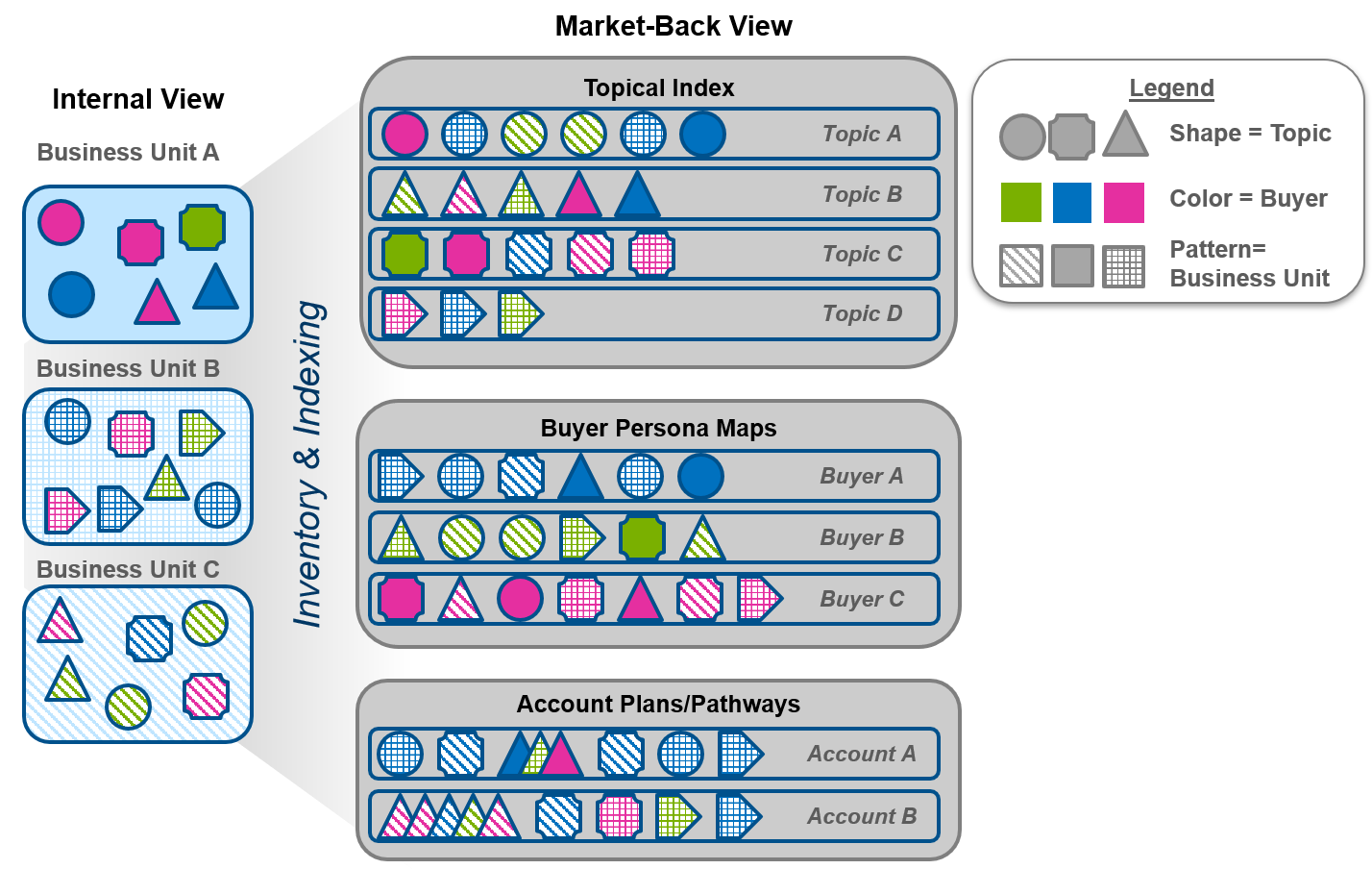Often, companies organize their portfolios from an internal point of view based on their organizational structure – i.e., which part of the organization created, manages, or delivers on the offer. This can result in operating redundancies and inefficiencies, inability to tap into best practices across business units, and in extreme cases, even competition between business units in the market.
Portfolio Perspectives

Stepping back to view your portfolio from a market perspective can drive internal efficiencies and leverage, as well as market success by:
-
-
-
- Understanding natural linkages between offers based on the needs of a specific account or market segment
- Creating more value with key buyers and decision makers by understanding the full array of solutions that the company can bring to bear on their specific challenges and opportunities
- Tapping into the full breadth of expertise available on specific or related topics
- Improving the clarity and relevance of messaging on important topics
- Highlighting opportunities to collaborate across business units to enhance value for customers and growth for the business
-
-
The following market-back perspectives will shed light on opportunities to improve selling resource leverage, identify delivery best practices, drive pricing and margin consistency, expand cross-sell and upsell, and develop and execute account plans for greater growth.
Topical Index: Arranges the offers across all business units or brands according to the topics they address, problems they solve, and/or opportunities they capture for clients. It will provide visibility to potential opportunities to:
-
-
-
- Share best practices across business units/brands
- Enhance client options during the sales cycle
- Improve delivery resource leverage
- Standardize and improve pricing and margin
- Simplify and clarify the portfolio and related messaging
-
-
Buyer Persona Map: Arranges the offers across all business units and brands according to the likely economic buyer/primary decision maker at the client or customer. It will provide visibility to potential opportunities to:
-
-
-
- Cross-sell based on existing relationships
- Enhance client options during the sales cycle
- Hone and target sales messages and value propositions
- Simplify and clarify the portfolio
- Identify portfolio gaps with existing buyers or new buyers to engage
-
-
Account Plans: Sequence the offers in a logical buyer journey based on the circumstances and needs of an individual account in order to:
-
-
-
- Develop action plans for sales and account management activities
- Deploy commercial and delivery resources that will best enable execution of the plan for both client objectives and business growth objectives
- Set selling goals and targets
- Provide input and context for business planning
-
-
Account Pathways: “Standardized account plans” built for specific market segments or groups of like clients that can serve as a starting point to customize and/or benchmark for a specific account. It sequences the offers in a logical buyer journey based on the expected or known circumstances and needs of that market segment in order to:
-
-
-
- Simplify and accelerate account planning
- Improve likelihood of winning deals
- Achieve greater, more impactful client results by bringing a broader suite of solutions to bear for the client
- Set selling goals and targets
- Provide input and context for business planning
-
-
Written by: Doug Long
About the Author: Doug Long is a Partner with McMann & Ransford and has more than 26 years of experience in consulting across various industries, topics, and client challenges. Prior firms include Deloitte and GE. He currently leads our Healthcare Practice.
